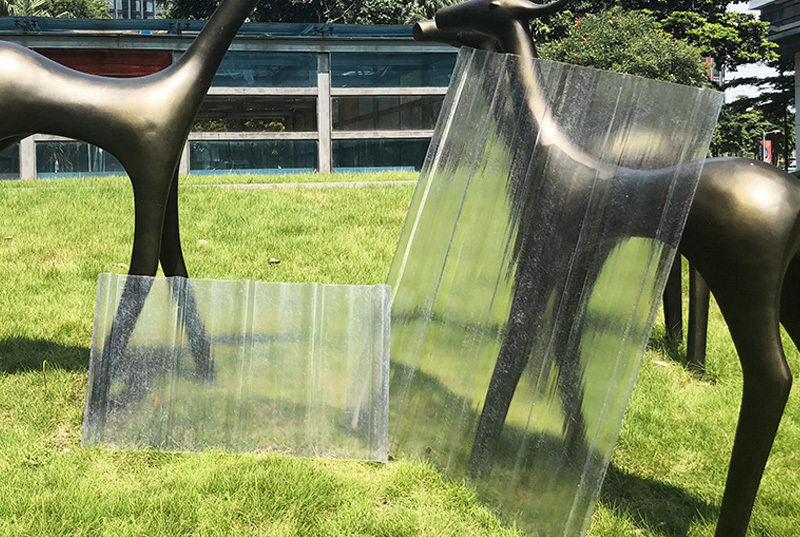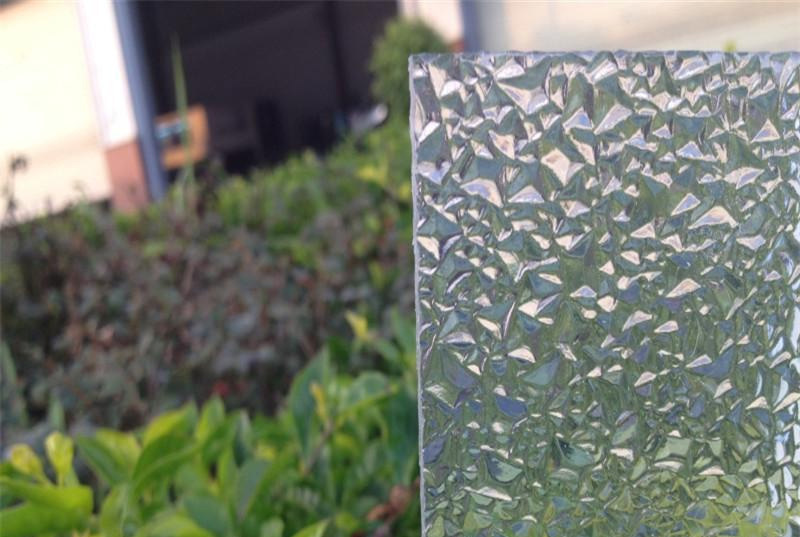FRP corrugated sheet FAQ
Release time:
Jan 11,2025
FRP corrugated sheets are composite materials made from a polymer matrix reinforced with fibers, typically glass fibers.
FRP Corrugated Sheet FAQ
FRP (Fiber Reinforced Plastic) corrugated sheets have gained significant popularity in various industries due to their lightweight, durability, and excellent corrosion resistance. As more people and businesses consider using FRP corrugated sheets for their projects, several common questions arise. This article aims to address some of the frequently asked questions about FRP corrugated sheets, covering aspects such as their properties, applications, installation, and maintenance.
◆ What are FRP Corrugated Sheets?
FRP corrugated sheets are composite materials made from a polymer matrix reinforced with fibers, typically glass fibers. The corrugated design provides structural strength while maintaining a lightweight profile. These sheets are commonly used as roofing, wall cladding, and in various industrial applications due to their ability to withstand harsh environmental conditions.
◆ What are the Benefits of Using FRP Corrugated Sheets?
One of the primary advantages of FRP corrugated sheets is their high strength-to-weight ratio. This means they can bear significant loads without adding excessive weight to the structure. Additionally, FRP sheets are resistant to corrosion, UV radiation, and extreme weather conditions, making them ideal for outdoor applications.
Another benefit is their low maintenance requirements. Unlike traditional materials like metal or wood, FRP sheets do not rust or rot, reducing the need for frequent repairs or replacements. Furthermore, they offer excellent thermal insulation properties, helping to maintain comfortable indoor temperatures and reducing energy costs.
◆ Where are FRP Corrugated Sheets Commonly Used?
FRP corrugated sheets are versatile and can be used in various applications. Common uses include:
1. Industrial Roofing: Many factories and warehouses use FRP sheets for roofing due to their durability and resistance to chemicals.
2. Agricultural Structures: Greenhouses, barns, and livestock shelters often utilize FRP sheets because they allow natural light while providing protection from the elements.
3. Transportation: FRP sheets are used in the construction of bus shelters, railway stations, and other transportation facilities due to their lightweight and strong nature.
4. Recreational Facilities: Swimming pool covers, sports facilities, and outdoor pavilions often incorporate FRP sheets for their aesthetic appeal and durability.
◆ How Do You Install FRP Corrugated Sheets?
Installing FRP corrugated sheets requires careful planning and execution to ensure a secure and long-lasting installation. Here are some general steps to follow:
1. Preparation: Ensure that the underlying structure is clean, dry, and free of debris. Measure the area where the sheets will be installed to determine the number of sheets required.
2. Cutting: Use a fine-toothed saw or specialized cutting tool to cut the sheets to the desired size. Always wear appropriate safety gear, including gloves and goggles, to protect against sharp edges and dust.
3. Laying Out the Sheets: Begin laying out the sheets from one end of the structure to the other, ensuring they overlap correctly to prevent water leakage. It’s essential to follow the manufacturer's guidelines regarding overlap and spacing.
4. Fastening: Use appropriate fasteners, such as screws or clips, to secure the sheets to the underlying structure. Ensure that the fasteners are compatible with FRP materials to avoid corrosion.
5. Sealing: Apply sealant around the edges and fasteners to provide additional protection against water infiltration.
6. Inspection: After installation, inspect the sheets for any gaps or loose areas. Make any necessary adjustments to ensure a watertight seal.
◆ What Maintenance is Required for FRP Corrugated Sheets?
FRP corrugated sheets are relatively low maintenance, but periodic checks and cleaning are recommended to ensure their longevity. Here are some maintenance tips:
1. Regular Inspections: Check the sheets for any signs of damage, such as cracks or discoloration. Address any issues promptly to prevent further deterioration.
2. Cleaning: Use a soft cloth or sponge with mild soap and water to clean the surface of the sheets. Avoid abrasive cleaners that can scratch the surface.
3. Avoiding Heavy Loads: While FRP sheets are strong, avoid placing heavy objects on them to prevent bending or cracking.
4. UV Protection: If the sheets are exposed to direct sunlight, consider applying a UV protective coating to prolong their lifespan.
◆ Are There Any Environmental Considerations with FRP Corrugated Sheets?
When considering the environmental impact of FRP corrugated sheets, it's important to note that while they are made from plastic, they can be recycled. Some manufacturers offer recycling programs to repurpose old FRP materials, reducing waste. Additionally, the longevity and durability of FRP sheets mean that they do not need to be replaced as frequently as traditional materials, leading to less waste over time.
◆ Conclusion
FRP corrugated sheets are a versatile and durable solution for various applications. Their unique properties make them an excellent choice for those seeking lightweight, corrosion-resistant materials. By understanding the benefits, applications, installation methods, and maintenance of FRP corrugated sheets, users can make informed decisions that meet their project needs. Whether for industrial, agricultural, or recreational purposes, FRP corrugated sheets offer a reliable and long-lasting option that can withstand the test of time.
Key words:
You Can Also Learn More About The Industry.










